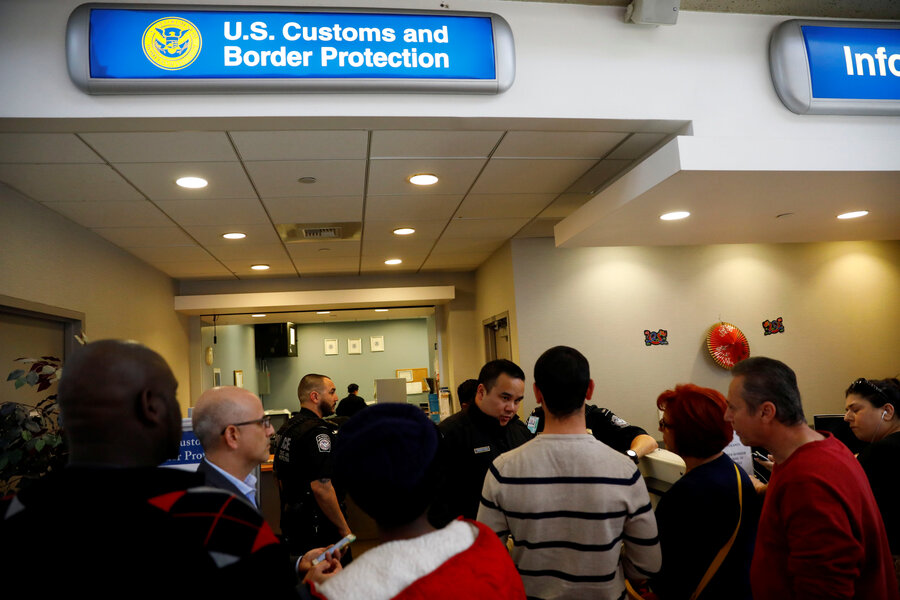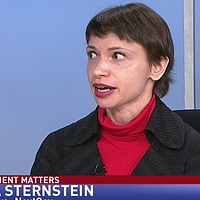Trump's immigration order vastly expands border surveillance
Loading...
As part of President Trump's controversial executive order barring travel to the US from seven Muslim-majority nations, the White House instructed the Department of Homeland Security to escalate the deployment of a biometric monitoring system to evaluate all visitors crossing US borders.
Now, Homeland Security is rushing to equip airports across the country with sophisticated facial recognition software, according to an agency official. The technology will check the identities of departing visitors to ensure they haven't overstayed visas, aren't wanted in criminal or terrorist investigations, and to confirm they aren't trying to leave the country with forged documents.
Since 2004, DHS has collected fingerprints from most foreigners entering the country to ensure imposters and criminals don't get in. But the department hasn't been able to similarly check the identities of departing visitors, largely because jetways, gangplanks, and highways weren’t built to accommodate fingerprint or facial sensors.
In a recent trial at Atlanta's Hartsfield-Jackson International Airport, the agency successfully tested workstations that captured images to verify passengers' identities before boarding. At the nation's top airports, DHS also has tried mobile fingerprint scanners to identify foreigners exiting the country. In addition, DHS has experimented with capturing images of irises at an outdoor US-Mexico border crossing in Otay Mesa, Calif.
Now, the expansion of the multibillion dollar surveillance apparatus is already alarming privacy and civil liberty advocates.
"There needs to be much more of a conversation over what limitations and protections are going to be in place, what this means for the privacy of incoming travelers, how this could affect how Americans are treated when they travel overseas and the information they have to provide, and what the cybersecurity threats are," says Neema Singh Guliani, legislative counsel with the American Civil Liberties Union, who previously worked for the DHS Chief of Staff’s Office on national security and civil rights issues.
In addition to privacy issues, Ms. Guliani points out that recent research has raised questions about the accuracy of facial recognition technology.
For instance, algorithms in three state-of-the-art facial recognition systems all performed less accurately on females, Blacks, and adults under 30, according to a 2012 IEEE study coauthored by an FBI technologist.
"There is the possibility that individuals could be stopped or detained, stemming from either a false positive or a false negative," Ms. Guliani said.
Yet, on Wednesday, a DHS Customs and Border Protection (CBP) spokeswoman said the agency is accelerating the creation of a biometric exit system "by building upon existing operational platforms" and has found "a feasible solution."
The agency expects to scale up "the successful biometric pilots in operation" and will provide timelines and deployment schedules in the "near future," she added. CBP currently is collaborating with partners in industry and government to ensure the system works properly, the spokeswoman said.
When asked about privacy issues, the DHS official pointed to a Dec.16, 2016, DHS privacy impact assessment of the airport facial recognition program that lists measures taken to protect civil liberties and secure data systems.
The agency retains photos of nonimmigrant aliens and lawful permanent residents for a maximum of 15 years, and deletes any pictures of US citizens once their identities have been confirmed, according to the assessment. CBP officers connect mobile tablets to a virtual private network with two-factor authentication and strong encryption to transfer face snapshots to the agency's database. The images are deleted from the device after the flight is completed. Only agency personnel and CBP contractors can access the collection device and database.
CBP acknowledges it does often share information with federal, state, and local authorities, which may be authorized to use the information for purposes beyond the scope of the agency's mission.
Congress first passed a mandate for an automated system in 1996 and continuously has repeated and expanded on the requirement for biometric checks to be implemented, most notably after the the 9/11 Commission endorsed the move. Two of the September 2001 hijackers overstayed their visas.
It was only recently, in January 2016, that the government estimated the number of visitors holding expired visas, based on text records, not biometrics. Roughly 500,000 of the nearly 45 million foreign travelers in 2015 overstayed, DHS reported.
CBP had been gearing up for a renewed focus on biometric exit under a new administration, even before Trump was elected, former Homeland Security officials say. Democratic presidential nominee Hillary Clinton, while serving in the US Senate, co-sponsored legislation calling for a biometric entry-exit system and Trump said the issue would be a "top priority" if he won.
"The blowtorch just got a little hotter with this executive order," said Jim Williams, a former Homeland Security official who oversaw efforts to jumpstart biometric screening from 2003 to 2006.
Even with advanced tech, the logistics of operating biometric sensors at land and sea ports may remain a hurdle for some time, he predicted. How, without slowing traffic, "can you get a camera in a car?" Mr. Williams asked.
Even though criminals and terrorists may be able to dodge surveillance cameras, says Seth Stodder, DHS assistant secretary for border, immigration and trade policy under President Obama, "It’s a worthwhile thing to work on to track who’s coming in and out of the country."








